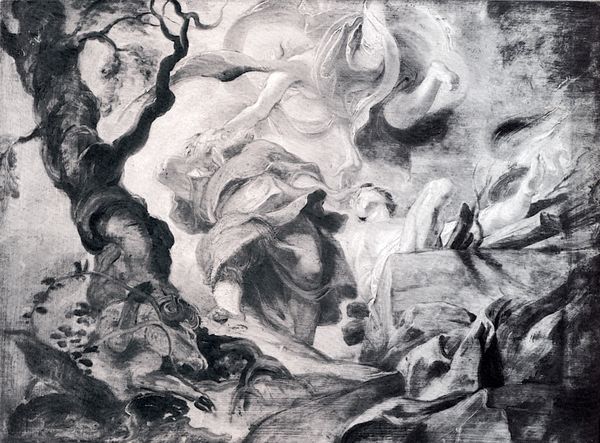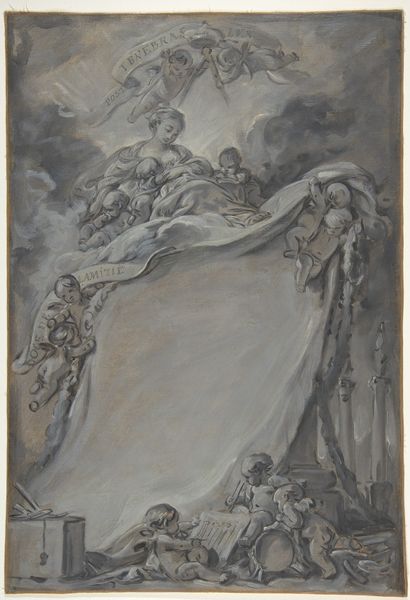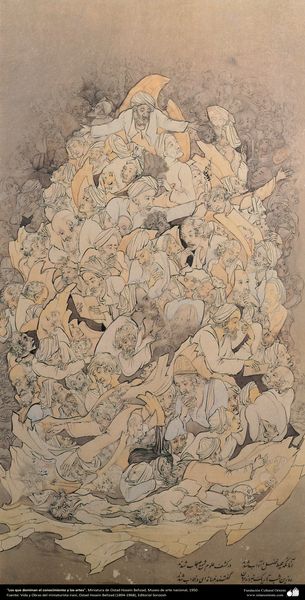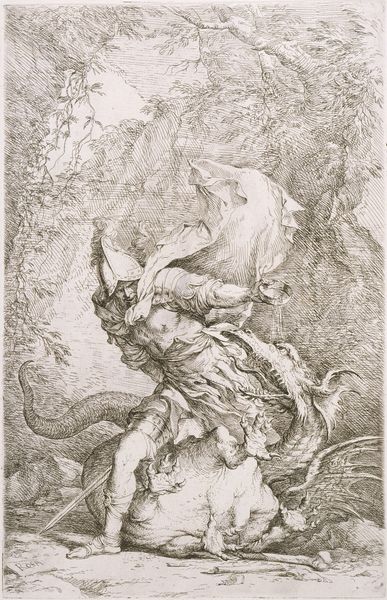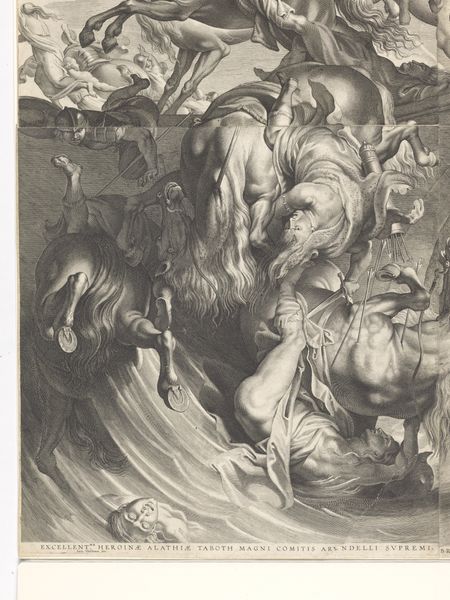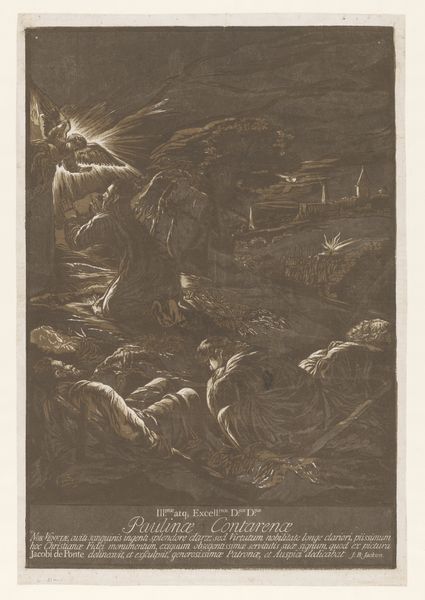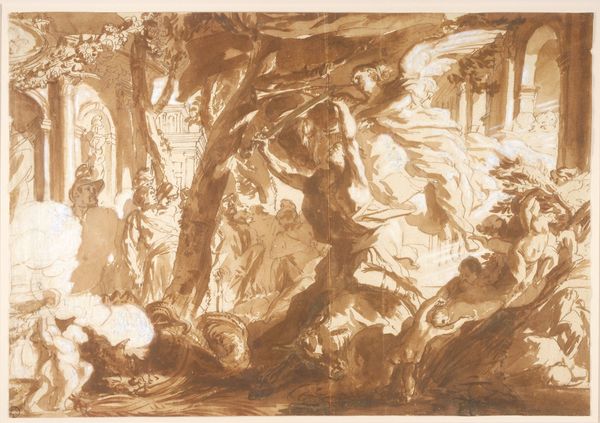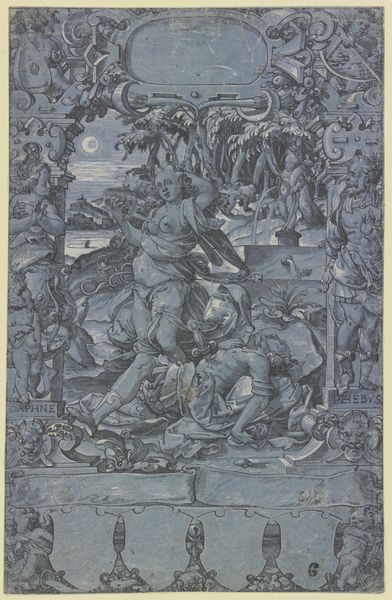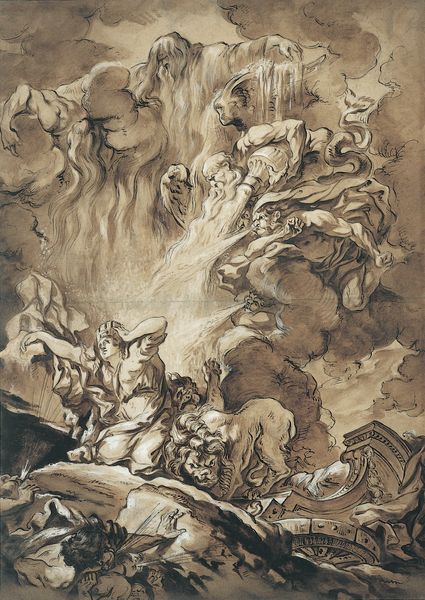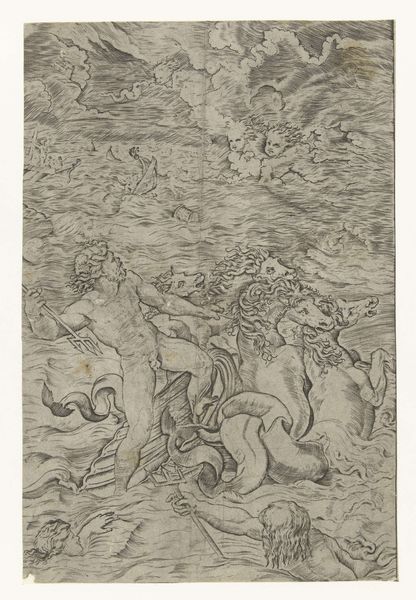
Zwei Frauen vor einem Altar kniend, zwei Engel tragen die Mondsichel, ein anderer schlägt Pauken, ein vierter trägt eine Kanone
0:00
0:00
drawing, gouache, ink
#
drawing
#
netherlandish
#
baroque
#
ink painting
#
gouache
#
ink
#
14_17th-century
#
watercolour illustration
#
history-painting
Copyright: Public Domain
Curator: What a flurry of activity! This drawing by Adriaen van der Werff, realized in ink and gouache, shows, as the title suggests, "Two Women Kneeling Before an Altar, Two Angels Carry the Crescent Moon, Another Beats Timpani, and a Fourth Carries a Cannon." Editor: It strikes me immediately as baroque, and frankly, quite theatrical. The stark contrast between light and shadow emphasizes the women's emotional plea, though it is somewhat unclear from whom, or what, they seek salvation. The inclusion of the angel bearing the cannon makes it a war scene or a call to arms, maybe? Curator: The historical context surrounding van der Werff does illuminate the piece, I think. Working in the late 17th and early 18th centuries, van der Werff operated within a Dutch Republic navigating the complexities of its Golden Age's decline and European power struggles. His artistic style, deeply influenced by classicism, often infused his work with allegorical and moralizing themes. Editor: Tell me more. What function did this blend serve? Curator: Van der Werff’s patrons, drawn from the upper echelons of society, appreciated the sophisticated narratives and refined style. The inclusion of religious and mythological figures interwoven with symbols of power reflected a broader effort to legitimize authority, which, in the face of changing sociopolitical landscapes, could then underscore the moral righteousness of those in power. In this piece, though, I feel a slightly unsettling juxtaposition of pious supplication with blatant displays of military might. Editor: Yes, the figures seem to point to some societal turbulence, certainly. I’m curious about the semiotics here; a cannon-bearing angel implies a sanctioned war. The kneeling women—are they pleading for victory, forgiveness, or perhaps mercy in a time of upheaval? Curator: Exactly. Van der Werff has layered a visual narrative that prompts us to consider the complexities of power, faith, and war within the canvas of the Dutch Republic, using ink, gouache, and drawing skills. He wasn't just crafting an image; he was constructing an argument through aesthetic means. Editor: Reflecting on van der Werff’s artistry, it’s fascinating how he infused his visual narratives with symbols of cultural anxieties. He offers a lens to reflect on the relationship between power and belief within 17th century Netherlandish society. Curator: Indeed. Through meticulous composition and allegorical elements, he encapsulated his era’s debates about piety and strength. The work, a historical artefact as well as artwork, enables us to contemplate these timeless themes and their continuing relevance.
Comments
No comments
Be the first to comment and join the conversation on the ultimate creative platform.
